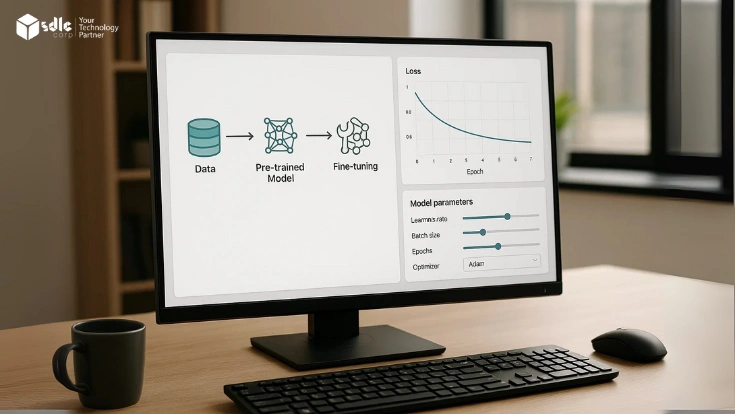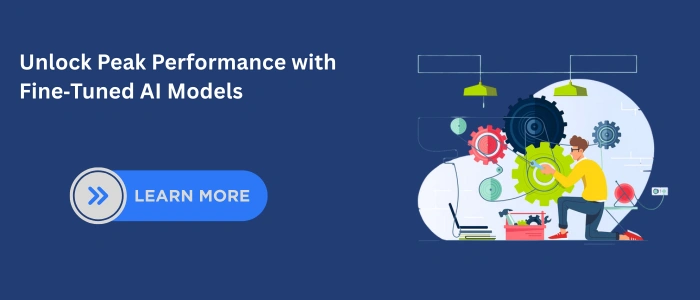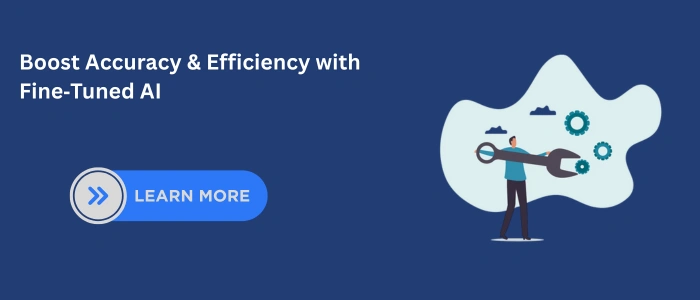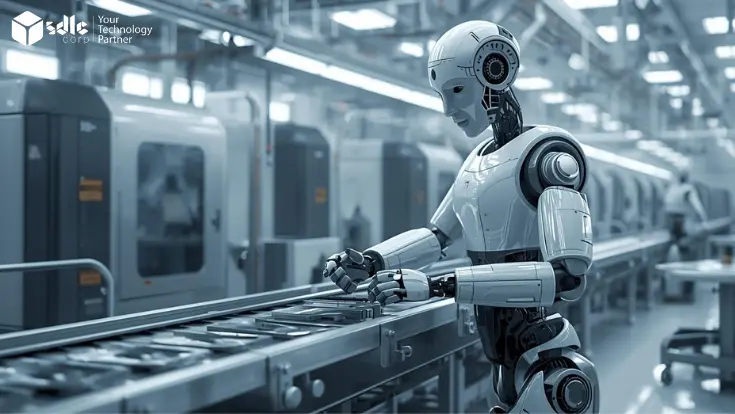Introduction
AI models like GPT, BERT, and Stable Diffusion have revolutionized industries, but out-of-the-box, they are often general-purpose. They might understand a broad range of topics but fail to deliver domain-specific accuracy.
This is where fine-tuning and AI Development Services come in. Fine-tuning allows developers to customize pre-trained models for their unique data, tasks, and objectives. Whether you want a chatbot that speaks your brand’s language or a model that detects fraud patterns in financial data, fine-tuning can help.
In this guide, we’ll explore what fine-tuning is, how it works, best practices, and future trends so you can harness it effectively for your projects.
What is Fine-Tuning?
Fine-tuning is the process of adapting a pre-trained AI model (one already trained on massive, general-purpose datasets) to perform better on a specific task or domain by training it on smaller, specialized datasets. This process ensures higher accuracy, domain-specific behavior, and faster deployment. Fine-tuning is widely used in Natural Language Processing (NLP), computer vision, and multimodal AI systems.
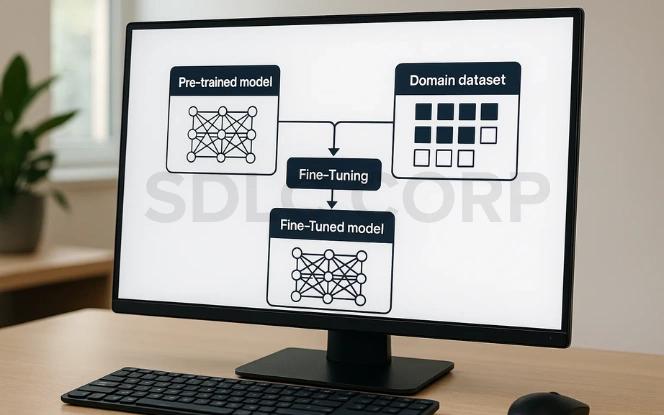
How Fine-Tuning Works
- Pre-trained model:
- Starts with a model trained on vast data (e.g., GPT-4 trained on web-scale content).
- Has general knowledge but may lack domain-specific understanding.
- Starts with a model trained on vast data (e.g., GPT-4 trained on web-scale content).
- Domain dataset:
- Smaller, curated, and task-specific (e.g., medical records, legal documents, customer service chats).
- Helps the model specialize in niche areas.
- Smaller, curated, and task-specific (e.g., medical records, legal documents, customer service chats).
- Fine-tuning process:
- Retrains the model partially or fully on the new dataset.
- Adjusts weights and biases to refine predictions or responses.
- Balances between retaining general knowledge and achieving task-specific performance.
- Retrains the model partially or fully on the new dataset.
Types of Fine-Tuning
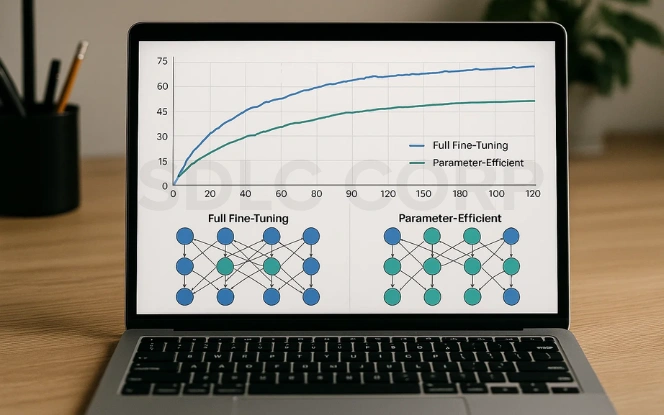
Full Fine-Tuning:
- All model parameters are updated.
- Pros: Maximum performance improvement for specific tasks.
- Cons: Requires high computational resources and large labeled datasets.
Parameter-Efficient Fine-Tuning:
- Only a subset of parameters is updated.
- Techniques: LoRA (Low-Rank Adaptation), Adapters, Prefix Tuning.
- Pros: Faster, cheaper, and resource-friendly.
- Cons: Slightly less task-specific customization compared to full tuning.
Additional Key Points
- Fine-tuning bridges the gap between general AI models and industry-ready solutions.
- It is essential for brand-specific tone, regulatory compliance, and specialized knowledge integration.
- Can be applied to text, images, audio, or multimodal AI models.
- Ongoing fine-tuning is often required to keep models updated with changing trends or new data.
Also read – Retrieval-Augmented Generation (RAG)
Why Fine-Tuning Matters
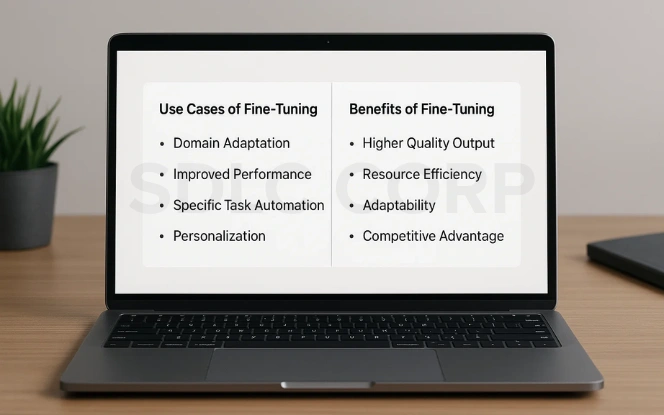
Fine-tuning is more than a performance upgrade; it turns general-purpose AI models into highly specialized solutions tailored for unique business needs. Instead of starting from scratch, fine-tuning leverages the power of pre-trained models and aligns them with your organization’s goals, tone, and ethical standards. It allows businesses to achieve precision, cost-effectiveness, and faster deployment while maintaining flexibility to adapt to evolving requirements.
Benefits of Fine-Tuning
- Higher accuracy: Models become task-specific, improving their performance in niche domains.
- Cost-efficiency: Avoids the huge expenses of building and training models from the ground up.
- Time-saving: Speeds up development and deployment compared to full-scale model training.
- Better alignment: Ensures AI models follow brand tone, compliance rules, and industry regulations.
- Reduced data requirement: Needs less training data compared to training a model from scratch.
- Scalability: Easily adapts models for multiple tasks within the same organization.
- Continuous improvement: Supports iterative updates to keep models relevant as business needs evolve.
Use Cases of Fine-Tuning
Healthcare:
- Disease prediction from medical records.
- AI assistants for patient care.
- Clinical document summarization.
Finance:
- Detecting and preventing fraudulent transactions.
- Risk analysis and predictive modeling.
- Automating financial document analysis.
E-commerce:
- Personalized product recommendations.
- AI-powered virtual shopping assistants.
- Sentiment analysis for customer feedback.
NLP (Natural Language Processing):
- Chatbots tuned to specific industries (e.g., legal, education).
- Automatic summarization of lengthy documents.
- Translation models trained for regional dialects or technical language.
Step-by-Step Fine-Tuning Process
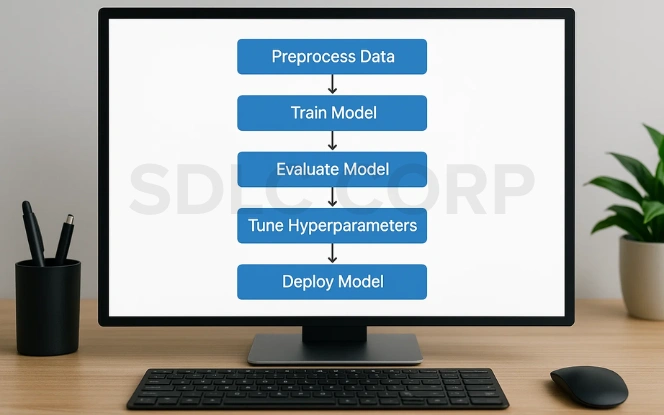
Fine-tuning may sound complex, but it can be broken down into structured steps. This process helps you adapt pre-trained AI models efficiently to meet your specific goals.
1. Choose the Right Pre-Trained Model
The starting point is selecting a foundation model that fits your use case.
- Language models: GPT, BERT, LLaMA (for NLP tasks like chatbots, summarization, classification).
- Vision models: CLIP, ResNet (for image recognition, computer vision tasks).
- Multimodal models: LLaVA, Flamingo (for tasks involving both text and images).
2. Prepare Your Data
Your data is the fuel for successful fine-tuning.
- Collect domain-specific datasets: For example, medical records for healthcare AI or legal documents for law-focused chatbots.
- Clean & preprocess: Remove duplicates, standardize formatting, and normalize data.
- Annotate if necessary: Add proper labeling for supervised tasks (e.g., tagging for classification problems).
3. Set Up Your Environment
Establish a robust training environment.
- Frameworks: Use PyTorch, TensorFlow, or Hugging Face Transformers for flexibility and scalability.
- Hardware: Leverage GPUs/TPUs for faster processing.
- Cloud platforms: Utilize AWS SageMaker, Google Vertex AI, or Azure ML for large-scale experiments without heavy on-premise investments.
4. Configure Hyperparameters
Hyperparameters control how your model learns.
- Learning rate: Adjust how quickly the model updates its weights.
- Batch size: Choose the number of samples processed before the model updates.
- Epochs: Set the number of full passes through the training data.
5. Train & Validate
This is where the model adapts to your data.
- Training: Retrain the pre-trained model on your custom dataset.
- Validation: Use a separate validation set to prevent overfitting and fine-tune parameters further.
- Evaluation: Track metrics like accuracy, F1-score, or loss reduction to measure success.
6. Deploy & Monitor
Bring your fine-tuned model into the real world.
- Deployment: Integrate it into applications, APIs, or services.
- Monitoring: Continuously observe performance to detect model drift or reduced accuracy.
- Retraining: Periodically update the model with new data to keep it relevant.
Challenges in Fine-Tuning
| Challenge | Impact (1-10) | Difficulty to Mitigate (1-10) |
|---|---|---|
| Data Scarcity | 8 | 7 |
| Overfitting | 7 | 6 |
| Resource Costs | 9 | 9 |
| Bias | 8 | 8 |
Explore – Diffusion Models for Generation
Popular Tools & Frameworks for Fine-Tuning AI Models
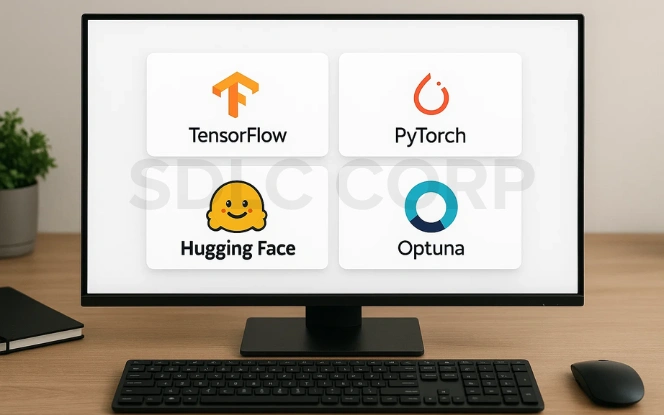
Fine-tuning AI models becomes faster, more cost-efficient, and highly scalable when the right tools are used. From open-source libraries to enterprise-ready platforms, these solutions help researchers, developers, and businesses adapt pre-trained models for domain-specific needs with minimal effort.
1. Hugging Face Transformers
- Industry-leading open-source library for NLP, vision, and multimodal fine-tuning.
- Offers pre-trained models (BERT, GPT, T5, CLIP) ready for customization.
- Built-in support for LoRA, PEFT, and adapters for efficient fine-tuning.
- Best for: Quick experimentation and production-ready workflows.
2. PyTorch Lightning
- Simplifies complex training workflows with modular, clean code.
- Eases scaling from research to production environments.
- Ideal for fine-tuning large deep learning models efficiently.
- Best for: Teams needing structured, production-oriented setups.
3. Cloud Platforms (AWS SageMaker, Azure ML, Google Vertex AI)
- Provide fully managed environments for training and deployment.
- Support distributed training for handling large models at scale.
- Offer enterprise-grade monitoring, security, and compliance.
- Best for: Large-scale, high-security enterprise projects.
4. LoRA & PEFT Libraries
- Enable Low-Rank Adaptation (LoRA) & Parameter-Efficient Fine-Tuning (PEFT).
- Significantly reduce compute and memory costs.
- Hugging Face PEFT library makes integration easy and production-ready.
- Best for: Cost-conscious projects with limited hardware resources.
5. Additional Tools
- Weights & Biases (W&B): Track experiments and model performance.
- Fast.ai: High-level API for simpler and faster fine-tuning.
- DeepSpeed: Optimizes large-scale training and reduces resource needs.
Best Practices for Fine-Tuning AI Models
| Best Practice | Purpose | Key Takeaway |
|---|---|---|
| Start small | Experiment with lightweight models first | Helps reduce cost & complexity during initial trials |
| Use parameter-efficient techniques | Apply LoRA, adapters, and quantization | Lowers computational needs & speeds up fine-tuning |
| Monitor regularly | Track performance & detect model drift | Ensures model stays accurate & reliable over time |
| Ethics first | Review outputs for bias & compliance | Promotes fairness, trustworthiness & regulatory adherence |
Also read – Transfer Learning Essentials
Future of Fine-Tuning

Fine-tuning is evolving rapidly, making AI customization more accessible, automated, and efficient. Here’s what the future holds:
1. No-Code Fine-Tuning
- Platforms are emerging that let users fine-tune models without writing code.
- Drag-and-drop interfaces and guided workflows are democratizing AI development.
- Opens up AI customization to non-developers, small businesses, and domain experts.
- Speeds up deployment for industries without large tech teams.
2. AutoML-Driven Fine-Tuning
- Automated Machine Learning (AutoML) tools will handle data preprocessing, hyperparameter tuning, and retraining with minimal manual effort.
- Reduces the need for specialized ML engineers for every project.
- Makes continuous learning pipelines possible, keeping models up to date as data changes.
3. Edge-Friendly Fine-Tuning
- Development of lightweight fine-tuning techniques for mobile, IoT, and edge devices.
- Ensures models can adapt quickly without depending on cloud infrastructure.
- Enables real-time, low-latency AI in applications like smart wearables, autonomous vehicles, and on-device assistants.
Conclusion
Fine-tuning is the bridge between general AI and customized, high-performance solutions. It transforms pre-trained models into tools that understand your industry, data, and goals. Whether you’re a startup optimizing a chatbot for better customer engagement or an enterprise building predictive analytics to drive smarter decisions, fine-tuning is your shortcut to powerful, domain-specific AI.
Explore how SDLC Corp can help you fine-tune models for your unique use cases and take your AI strategy to the next level.
FAQs
1. What is fine-tuning in AI?
Fine-tuning is the process of adapting a pre-trained AI model to perform better on a specific task or domain by training it on smaller, domain-specific datasets. This helps achieve higher accuracy and relevance without building models from scratch.
2. How much data do I need for fine-tuning?
The amount of data depends on the model size and complexity of the task. Parameter-efficient fine-tuning (like LoRA) can work well with a few thousand labeled examples, while full-model fine-tuning often requires larger datasets.
3. What are the benefits of fine-tuning over training from scratch?
Fine-tuning is faster, cheaper, and more efficient than building a model from scratch. It leverages pre-trained knowledge, reducing computation needs and accelerating deployment while improving task-specific performance.
4. Can fine-tuning cause overfitting?
Yes, especially when using small datasets. To prevent this, use validation sets, regularization techniques, and parameter-efficient methods like adapters or LoRA that minimize overfitting risks.
5. What industries benefit the most from fine-tuning?
Fine-tuning is widely used in healthcare (diagnosis prediction), finance (fraud detection), e-commerce (recommendation systems), and NLP applications like chatbots, summarizers, and translators tailored for specific domains.

